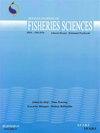Research Article: Effeciency of Spirulina platensis cultured with different nitrogen regimes on larval development, growth and survival rate of white shrimp, Litopenaeus vannamei n.R.1
IF 0.6
4区 农林科学
Q3 FISHERIES
引用次数: 0
Abstract
The blue-green algae Spirulina platensis was cultured with different nitrogen regimes (NH4Cl, NH4NO3 and KNO3) with concentrations of 0.010, 0.025 and 0.050 M and then fed to Litopenaeus vannamei at 19 days post hatch (PLI) to evaluate the nutritional quality. At the end of the experiment, growth and survival rate were determined, and the larval development was calculated. The maximum protein content was obtained in culture media containing NH4NO3 followed by NH4Cl and KNO3 (p >0.05). Moreover, in all S. platensis cultures, increases in nitrogen concentrations led to increases in protein content. The present study showed that, with the exception of shrimp larvae at 5 days post hatch, L. vannamei shrimp larvae fed on S. platensis cultured in NH4NO3, as a nitrogen regime, generally developed significantly (p 0.05) when the nitrogen was varied in terms of regimes. Overall, the study points to the potential effectiveness of using NH4NO3 as a nitrogen regime in S. platensis culture media in producing live food for the hatchery production of L. vannamei shrimp larvae.研究文章:不同氮条件下培养的钝顶螺旋藻对凡纳滨对虾幼虫发育、生长和存活率的影响1
以0.010、0.025和0.050 M的不同氮浓度(NH4Cl、NH4NO3和KNO3)培养蓝绿藻螺旋藻,于孵化后19 d投喂凡纳滨对虾(Litopenaeus vannamei),评价其营养品质。试验结束时测定其生长和成活率,并计算幼虫发育情况。蛋白质含量最高的培养基为NH4NO3,其次为NH4Cl和KNO3 (p >0.05)。此外,在所有的高原葡萄培养物中,氮浓度的增加导致蛋白质含量的增加。本研究表明,除孵化后第5天的虾仔外,凡纳滨对虾仔以NH4NO3为氮源时,在不同氮源条件下发育均显著(p < 0.05)。综上所述,本研究指出了在铂氏对虾培养基中使用NH4NO3作为氮肥的潜在有效性,可用于生产凡纳米对虾幼虫孵化场的活饲料。
本文章由计算机程序翻译,如有差异,请以英文原文为准。
求助全文
约1分钟内获得全文
求助全文
来源期刊

Iranian Journal of Fisheries Sciences
FISHERIES-
CiteScore
2.30
自引率
11.10%
发文量
0
审稿时长
3 months
期刊介绍:
1- Living various species (contains animals and vegetal species) in various aquatic ecosystems.
2- Health and diseases of aquatic species.
3- Determining the stocks and specific time and location for catching and reliable exploitation for sustainable development.
4- Methods of propagation and culture of high value aquatic resources.
5- Aquatic stock assessment and the methods of restocking the high value species and suggestion for rate, areas and the time for releasing fish and other aquatic organisms fries.
6- Pollutant agents and their effects to the environments of aquatic species.
7- Feed and feeding in aquatic organisms.
8- Fish processing and producing new products.
9- The economic and social aspects of fisheries.
 求助内容:
求助内容: 应助结果提醒方式:
应助结果提醒方式:


